Beautiful and attractive rhododendrons for some reason are not too popular with Siberia gardeners. Perhaps this is influenced by the erroneous representations of dacnics about the capriciousness of this plant. Rhododendrons require exactly so much attention and care as any other decorative plant in the garden. The fact that this plant cannot be grown in the regions with a harsh climate is a myth. There are many cold-resistant rhododendron varieties that can be successfully grown in Siberia. Consider the most popular varieties of this plants for localities with a harsh climate, and also learn about the features of landing and care for Rhododendron in Siberia.
Rhododendron in Siberia. Description
Rhododendron immediately attracted his sonorous name. Translated from the Greek "rhodon" means "rose" and "dendron" - "tree." Rosewood popularly often called wild rosemary, meaning Dahurian rhododendron. There is also a beautiful legend about the origin of this shrub. Once the elves fled from the forest fire. They wandered into the new to the forest at the foot of the mountain and began to ask for the night at various plants. No one wanted to shelter themselves elves except lone bush. Early in the morning the elves decided to thank the good plant, giving it marvelous flowers the envy of the forest.
- The genus Rhododendron is striking for its diversity. It includes both deciduous shrubs and evergreens. Also born united not only shrubs, but also trees.
- A distinctive feature of the genus Rhododendron is a striking difference in plant height. Some of them creep along the ground, while others can grow up to 30 meters in height.
- Rhododendron belongs to the family of heather and brings together more than 1300 species of plants.
- Rhododendron leaves may have different shape and arrangement of features depending on the variety. Most species have a smooth dark green leaves are oval or oblong.
- Flowers of rhododendrons striking variety of colors. They may be pale pink, red, burgundy, magenta. Flowers often collected in the inflorescence and presented in the form of bells, and they can also be funnel-, rotate or tubular shape. Depending on the kind of flowers vary greatly in size. Some of them are very small, while others can reach 20 cm in diameter.
- The root system of garden rhododendrons lies not deep. It is fibrous and shallow, which makes landing this plant easy.
- Fruit of rhododendron - pyatistvorchataya box with numerous seeds inside. Each seed may reach a length of up to 2 mm.
- Rhododendrons are widespread in Southeast Asia, North America, the Himalayas, Japan.
- In Russia in the wild can be found about 18 species of rhododendron.
- In the natural nature of Rhododendrons choose for growth of feverish places near the reservoirs, seas and rivers, mountain slopes.
Rhododendron for Siberia. Sorta
If you want to grow rhododendron in the conditions of the Siberian climate, then it is thorough to approach the selection of a variety. For this climatic zone, only special varieties are suitable, which have frost-resistant characteristics and increased resistance to adverse weather conditions. Consider the most popular varieties that Siberian's love have already deserved.
Rhododendron Dauri in Siberia
- In natural nature, this type of rhododendrons is found in Korea, Northern Mongolia, Eastern Siberia, Northeast China, in Primorye Territories.
- Rhododendron Dauri refers to evergreen shrubs. Can reach height from 2 to 4 meters.
- A distinctive feature of Rhododendron Daursky is its strong branchiness and a grayish shade of the bark. The shoots grow up, they are pretty thin and have a slightly brown shade. The branches at the ends are slightly publisted.
- Leaves from Rhododendron Daurus have a smooth texture from above and scaly below. Depending on the age of the plant, the color of the leaves can be modified. First, they have a light green shade, and then brown or even a reddish dark color. The magnitude of the leaves is compact - no more than 3 cm long.
- The undoubted advantage of this species of Rhododendron is its stormy and long blossom. Purple-pink flowers will delight their owners for more than 3 weeks. Shrub can even bloom in autumn again. Flowers are funnelized, reach 4 cm in diameter.
- A distinctive feature of Rhododendron Daursky is its excellent winter hardiness, which is more inherent in the evergreen variety of this species.
Rhododendron Larbura in Siberia
- In natural nature, it is found in Mongolia, in Altai, in Eastern Siberia.
- This kind of Rhododendron received its name in honor of Botany Karl Christian Friedich Background Larber, who described this plant.
- Rhododendron Larbura can sometimes be called the gross.
- It occurs on stony areas, mountain slopes, in deciduous or fir forests, on river slopes.
- Rododendron Larbura until 1952 belonged to the type of Rhododendron Dauro.
- Shrub has strong branches, is a native plant. Height can reach up to 2 meters.
- The shoots of Rhododendron Larbura are thin, have a brown shade. Branches are also slightly published.
- The leaves are small - reach a length of about 3 cm. The top side of the sheet is smooth, and the lower scaly and the more dark. Leaves oblong, with a pointed end.
- The period of active flowering occurs from April to June. In the fall, the second wave of flowering may occur.
- Rhododendron Larbura is different from Rhododendron Dauri more intensely pink colors and a more dark color leaves. Leaves from Rhododendron Larbura are almost completely preserved until spring, which gives the right to call this shrub natives.
Rhododendron Shlippenbach in Siberia
- Rhododendron Schlippenbach can form light thickets in natural nature in China, Japan or Korea. In Russia, it is freely found only in one region - the south of Primorye.
- Rhododendron Schlippenbach received his name in honor of the Sea officer Alexander Shlippenbach, who gathered this beautiful leafy shrub on the expedition to Korea.
- The shrub has a rather empty crown and can reach height from 0.5 to 2 meters. Sometimes there are copies and up to 5 meters in height.
- A distinctive feature of Rhododendron Schlippenbach is a light gray color of the crust. Soothes have a characteristic redhead or brown shade.
- The leaves have a wedge-shaped elongated shape and can reach up to 10 cm long and 5 cm in width.
- Rhododendron Schlippenbach began to be actively cultivated since 1893. The undoubted advantage of this species of rhododendrons is high winter hardiness. The plant perfectly tolerate the air temperature to -26 degrees and the temperature of the soil to -9 degrees. This is exactly what allows you to freely grow rhododendrons of Schlippenbach in the climatic conditions of Siberia. If sudden spring frosts happen, flowers may suffer.
Rhododendron in Siberia. Photo
Rhododendrons look spectacle both in group landings and single. If you decide to plant shrubs by a group, then you should not mix flatfall and evergreen. Take into account the height and color of the plants. The highest rhododendrons are better to plant in the center, and lower at the edges. The extraordinary painting of the reservoir is able to give exactly Rhododendrons. They also look spectacular along the tracks, in rocky gardens, around the arbors and near the benches.
Rhododendron in Siberia. Landing and care
Planting Rhododendron in Siberia
- Choose time for landing Rhododendron in Siberia. The best time for planting this decorative shrub is spring. It was at this time that the plants are as much as possible to increase the processes of growth and development, which allows the plant better to root. If your seating material has a closed root system, then you can put a landing and later.
- Choose a place to land rhododendron in Siberia. Despite the fact that Rhododendrons belong to the thermal-loving plants, it is not necessary to choose for its landing too illuminated. It is better to prefer to a half-walled place under the scattered crown of garden trees. But too strong shadow Rhododendrons do not like. This decorative shrub grows perfectly under pines or firs. We also attach attention to the protection of rhododendron from a strong wind. Excellent conditions for the growth of most rhododendrons create reservoirs.
- We choose the soil for landing Rhododendron in Siberia. A place for planting this shrub should not be wetched. If the groundwater on your site fit too close to the soil surface, then pay attention to creating a good drainage layer when landing. Rhododendrons prefer to grow on sour and loose soils with the addition of sand, needles, peat, crumbs of pine crust.
- We choose the planting material. About how from varieties to give preference for landing in the climatic conditions of Siberia, you already know. It is desirable not to acquire seedlings "with hands". It is better to buy rhododendrons in nurseries. It is in this case that you can be confident in winter-hardy variety qualities. Before buying, carefully inspect the plant. It is better to buy a bush with a closed root system. You should not give preference to too large rhododendons. Choose a compact bush with leaves, dense shooting shoots. There should be no spots on the leaves, they should look out healthy. If you see that the leaves on the shoots in some places, it means that the plant is weak, and it is not worth buying it.
- Sale Rhododendron in Siberia. To begin with, it is necessary to prepare a landing pit. In the depth, it should be about 50 cm, and in the width - about 70 cm. The root system of this shrub is superficial, and therefore it is impossible to plunge the neck. The drainage layer should be about 20 cm. After planting, the plant needs to be pouring and climbing a cheese or pine bark. This will help preserve the acidity and soil moisture at the proper level. The mulch layer should be about 5 cm.
Growing Rhododendrons in Siberia. Features of care
In order for the shrub really pleased you with his bloom, you need to care for him. Consider some rules for the care of rhododendron in Siberia:
- Watering Rhododendrons. Despite the fact that this shrub is considered moisture, it is not necessary to get involved in watering. It is necessary to abundantly water the plant only in dry and hot months. If there is no reservoir nearby, which would create a comfortable humidity of the air for the plant, then the bush can be sprayed. Pay attention and quality of water itself for watering, if you want to enjoy bright colors colors. Tap water contains calcium and magnesium salts, which is not very useful for the plant. It is better to water rainwater, artesian or sparkling plumbing.
- Falker Rhododendrons in Siberia. Young plants do not need feeding the first few years. This is a huge plus for those gardeners who are afraid of capricious plants. All you can do for a young rhododendron is slightly acidifying the soil in the spring way under the bush of oxalous or citric acid. Of course, acids should not be concentrated. Use only a weak solution. But adult plants are remarkably responded with bright and stormy blossoms on the introduction of superphosphate, urea, potassium sulfate. It is recommended to conduct such feedstocks 1 time in spring and 1 time in the middle of summer.
- The soil looser. The lack of necessity in the constant looser of the soil around the shrub is another plus for novice gardeners. Rhododendrons grow perfectly, if the soil just water and periodically mulk. You do not need to loosen the land.
- Trimming bush. Experienced gardeners are recommended not to get involved in the trimming of this decorative shrub. "Extra" branches of him appear rarely. Light sanitary "haircut" can only make in the spring, and then periodically delete faded inflorescences.
Preparing Rhododendrons in Siberia for Winter
Siberia is famous for its harsh winters. Each gardener in this climatic zone is simply obliged to know how to protect their plants from frost and winter wind. Consider the basic rules of wintering Rhododendrons:
- such varieties like Rhododendron Daursky, Shlippenbach, Larbura do not require some special shelter. They will move excellent winter if you just tighten the root neck;
- a little worse postpone the winter without shelter evergreen rhododendrons. Even winter-hardy varieties can be treated for the winter and climb. They need to be protected from strong wind and bright winter sun;
- you should not begin to warm the root rhododendron root system for the winter too early. So, the roasting neck can begin to bone. Create any insulation is better to start in November. But always need to focus on concrete weather conditions. The cold of up to -10 degrees is completely unaffected by winter hardening rhododendrons;
- do not hurry with the removal of the shelter in the spring. Wait when the Earth will overtake. Too bright March sun can damage the gentle leaf of the shrub.
Diseases and pests Rhododendrons in Siberia
Decorative shrubs need to constantly inspect the presence of diseases or pests in order to start taking measures on time. Among pests that can attack this blooming shrub, can be noted:
- rhododendron bug;
- shield;
- cobweb tick;
- rhododendron Mucha;
- weevils;
- slippers;
- snails;
- brojonogi mollusks.
In specialized stores, you can purchase insecticidal agents to combat one or another pest. The most often used solution of Fungicide TMTD, Diazinon, Crarmophos.
Among the diseases that can affect Rhododendrons, you can allocate:
- chlorosis;
- rust;
- cancer;
- spotted leaves.
With timely detection of pests or disease, the outcome is almost always favorable.
Rhododendron in Siberia. Reproduction
Method number 1. Rhododendron breeding in Siberia with cuttings
- It is best to choose green top shoots or semi-respected shoots.
- From escape you need to cut the top and bottom leaves. The remaining leaves are shortened by 1/3, leave the upper 2-3 sheets intact.
- Clean the bottom of the escape to Cambia.
- For 14-16 hours, be sure to soak the lower part of the escape in the growth stimulator solution.
- Prepared cuttings planted in bins with nutritional soil, watered, covered with glass and kept indoors with an air temperature of 16-20 degrees.
- After 2-4 months, the rooting of cuttings should occur. Now they need to be seeded in boxes and pinch the top. We put boxes in the basement.
- For the second year, the cuttings are planted into the open ground.
Method number 2. Rhododendron reproduction with tanks in Siberia
- At the beginning of the summer, you can try to multiply the bush in this way. Choose side flexible escape. Press it to the ground with the help of a bracket, sprinkle with wet soil, and the top of this escape direct up the tipping to the support.
- Watch out for the constant humidity of the soil over the molding.
- In winter, be sure to protect the boils and mulch.
- On the next autumn or in the spring of 2nd year, you can cut off the maternal bush and transplant to the "growing" in a half-walled place. After 2-3 years you can plant a young rhododendron at a permanent place.
Method number 3. Rhododendron reproduction in Siberia Decision bush
One of the easiest ways of breeding Rhododendron is the division of the bush. You will receive as many new copies as bush can give. Each of the parts should have a fairly developed root system.
Method number 4. Rhododendron breeding in Siberia seeds
Seed reproduction is the most unpopular method of breeding rhododendrons. It is used mainly by experts in nurseries. All complexity is to create strict conditions for seedlings. In addition, Rhododendrons, which are grown from seeds, will bloom only on the 4th or 9th year of life.
Rhododendron. Useful properties of the plant
Few people know, but Rhododendron has excellent medical properties. In parts of this plant, vitamin C at large concentration, arbutin, Ericolin, Rhododendrin, Andromedotoxin is found. The plant is widely used in traditional medicine for the following purposes:
- the plant can have a beneficial effect on the work of the cardiovascular system;
- folk remedies based on rhododendron can reduce blood pressure;
- the plant can have an antipyretic effect in viral diseases;
- in folk medicine, there is also an anesthetic effect of rhododendron on the human body;
- the use of rhododendron-based folk medicine funds are useful to people suffering from the nervous system disorders. The plant has a sedative and relaxing effect.
Of course, before applying any medicinal plant, including Rhododendron, you should consult with your doctor. It is especially worth avoided similar methods of treating pregnant women, women, nursing, children, people with diseases in acute phase. Any plant can cause an unforeseen allergic response of the body. Be careful!
Rhododendrons in Siberia, according to dachnikov, showed themselves great to growing plants in this climatic zone. Do not believe in myths about excessive capriciousness of this shrub and in incredible difficulties of care. As you have already been convinced of the article, Rhododendrons are quite simple in cultivation. The main thing is that you are required from you, it is thoroughly approaching the selection of a winter-hardy variety.

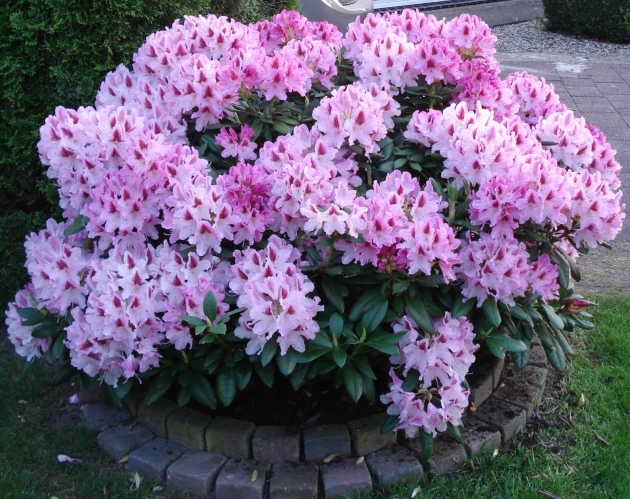
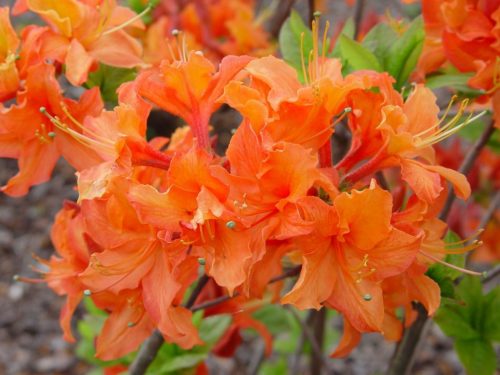
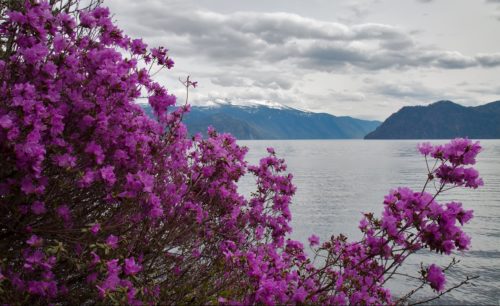
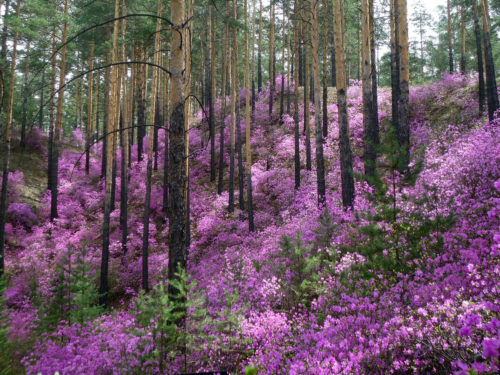
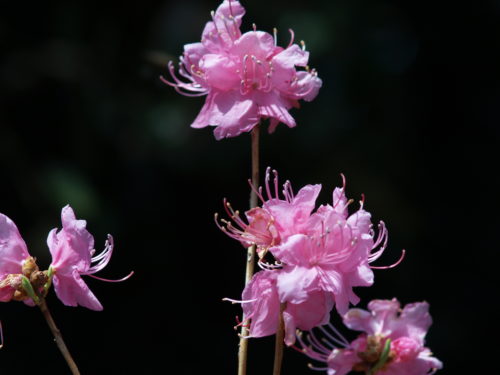
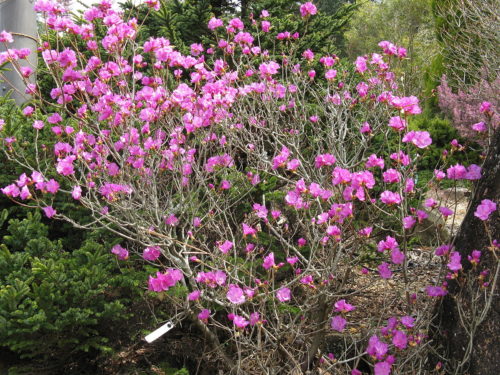
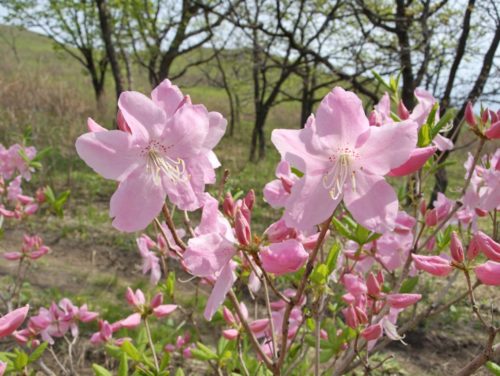
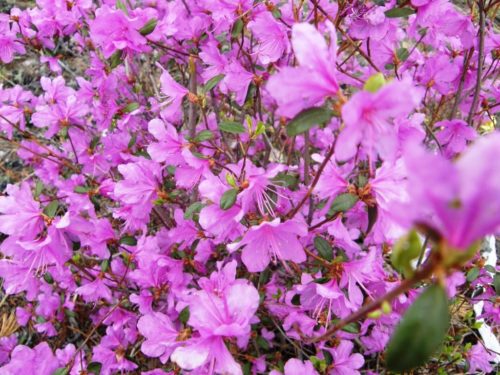
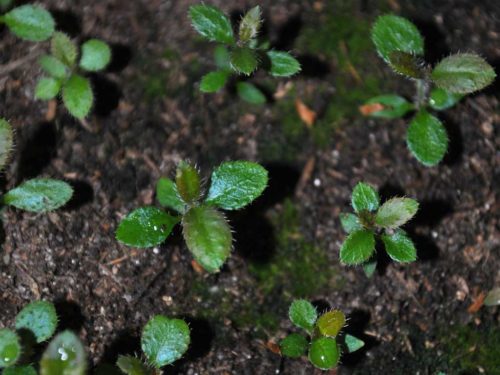
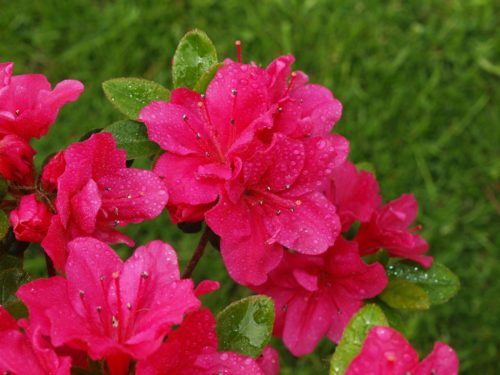
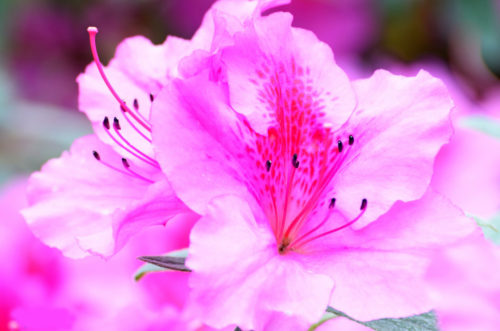












 Start a discussion ...
Start a discussion ...